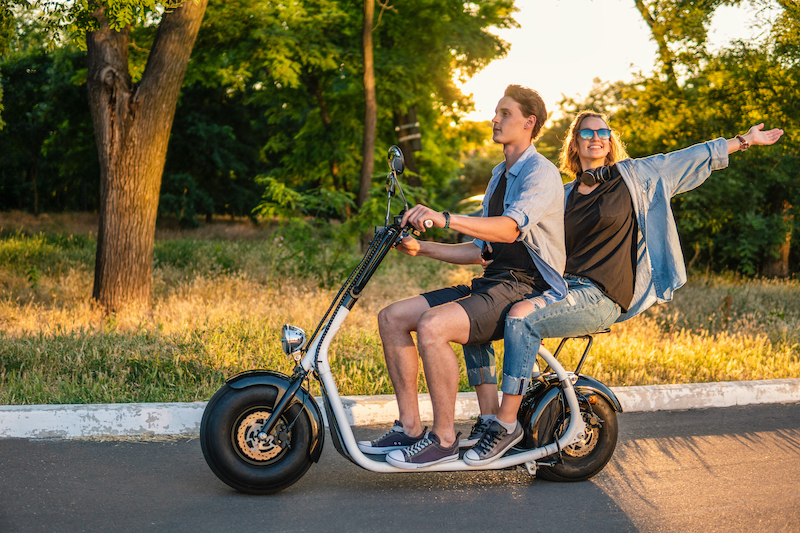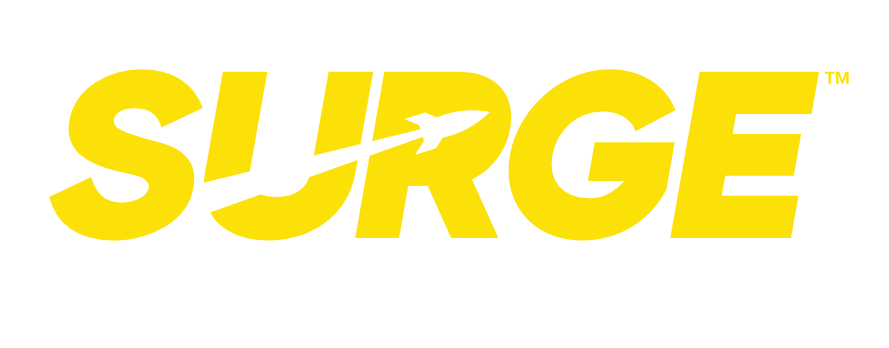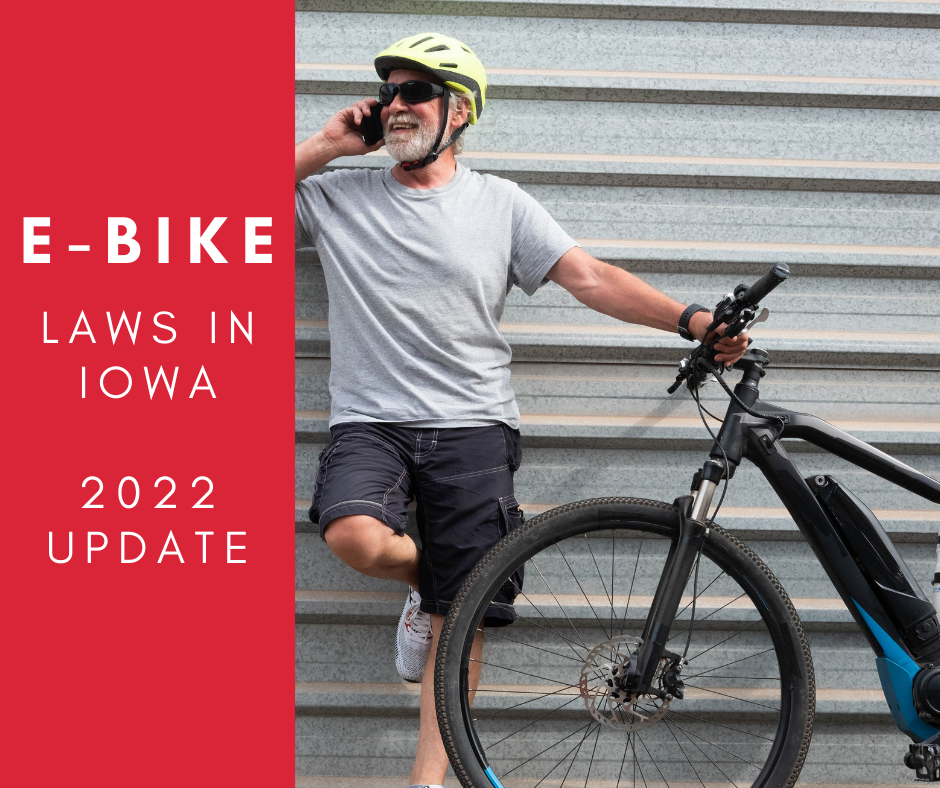Iowa’s Low-Speed Electric Bicycle law
As of January 1st, 2022, a new Iowa law takes effect that more clearly defines the rules around bicycles assisted with electric motors, commonly called “e-bikes.” I support having a more clear definition which should make understanding and applying the laws easier.
Bicycles that have motors are now classified as four different things and must be labeled properly. This can be seen in detail in House File 493.
Normally I write about small-business law questions, but I love riding my road bike and enjoy getting out on the trails. I’ve been interested in how e-bikes are treated since summer of 2021 when I was on the trial walking and heard a funny sound—an odd “wooshing.” I looked back and a bicyclist who was not peddling and moving very fast shot past me, despite going uphill. I think that e-bikes are a great invention that will allow more people to enjoy my favorite hobby, but this person was riding rudely in a way that doesn’t reflect well on the bicycling or e-bike community in Iowa. I wondered, “is that allowed on a trail?” The new laws answer that question.

Electric Mopeds, aka “Motorized Bicycles”
Do you love local and small businesses? If “Yes!” you can help them by telling them about Surge Business Law. Surge cares about small businesses. We offer champion advice and services to help businesses start strongly, grow fast, and succeed long-term. Tell your friends about Surge business law.
Motorized bicycles, electric or otherwise, that can power a rider faster than 28 mph fall into the same classification as mopeds. More specifically, if the power assist stays engaged as the bicycle speeds up past 28 mph, then it is classified as a “motorized bicycle,” which most of us call mopeds. Mopeds can drive up to 39 mph and require a license to operate on roads. It can have two or three wheels. If a two or three wheeled powered bike can go faster than 39 mph it is is a motorcycle.
If the motor is bigger than 750 watts, it is a moped, even if it doesn’t go faster than 28 mph. 750 watts is almost exactly equal to 1 horsepower, and mopeds are allowed to have up to 2.5 horsepower, which equals 1,875 watts.
If an e-bike’s power assist turns off when the speed reaches 28 mph or lower, then it is not a “motorized bicycle” or moped, instead it gets the newly clarified “low-speed electric bicycle” designation.

Three classes of “low-speed electric bicycles”
One of the big changes to the law is that electric bicycles need to be labeled properly. The label needs to be clear and it must specify which of the following classifications apply, what the maximum assisted speed is, and how powerful the motor is. If you upgrade an e-bike and the specifications change, the label must also be changed.
One other characteristic is if the electric assist only helps the rider while pedaling, or if it can actually power the bicycle without pedaling. In either case, the bike must disable the e-assist when you start to break or use a control to disable the assistance.
Low-speed class 1 e-bikes can only assist up to 20mph
If the e-assist kicks in only while pedaling and stops helping when the speed goes past 20mph, then it is a class 1 device, which doesn’t require any special rules other than the label. You can ride it on trails, on streets, or anywhere you can use a bike.
These bikes are very popular right now and are very common. If you need a little help getting up a hill or struggle to keep up with your friends, a class 1 e-bike is a great choice. According to the new classification, class 1 low-speed electric bicycles are treated the same as regular bicycles.
Low-speed class 2 e-bikes can pedal for you, up to 20mph
If you want to coast but the bike can keep pedaling then this elevates you up to a class 2 bike. The new changes do not place additional restrictions on class 2 e-bikes other than being labeled properly.
The law also don’t address bicycles that offer e-assist without pedaling but do not disable it after reaching 20mph, so presumably these are classified as mopeds, which is the default fall-back category for similar motorized vehicles.
Low-speed class 3 e-bikes can only assist up to 28mph
The typewriter font used in the legislative material made it hard to distinguish between 28 and 20, making it tricky to tell what the difference was between class 1 and class 3 low-speed electric bicycles. Class three bikes can go up to 28 mph before the e-assist turns off. I’ve gone faster than 28 mph on a regular bike when going down hill and its pretty fast.
A class 3 e-bike must have a speedometer (and it must show speed in mph) and you must be at least 16 years old to operate a class 3 bike. However, if the bike has space for a second seat, someone under 16 may be a passenger.

Using an e-bike on an Iowa highway
An electric bike could be classified as a motorcycle if it exceeds the requirements for a moped. It can also be a moped, or a motorized bicycle, using the criteria mentioned earlier in the document. In either of these cases, operating it on a highway follows the same laws as a motorcycle or moped, respectively.
If a bike meets the requirements to be classified as a “low-speed electric bicycle,” then the rider of the e-bike will be treated like a bicyclist and has the responsibilities and privileges of a bicycle. The Iowa DOT provides a handy and short guide for bike laws.
Using on trails? Central Iowa Trail Association says that motorized bikes that are not pedal assisted are not allowed. This will include bikes that are classified as mopes listed above.
How we help Businesses
Surge Business Law helps growing businesses maintain legal operations and gives them advice to surge success faster. If you are an e-bike company looking for more e-bike rules and business advice, reach out to us. Your first call is FREE. We want to help you do business well for years to come.


